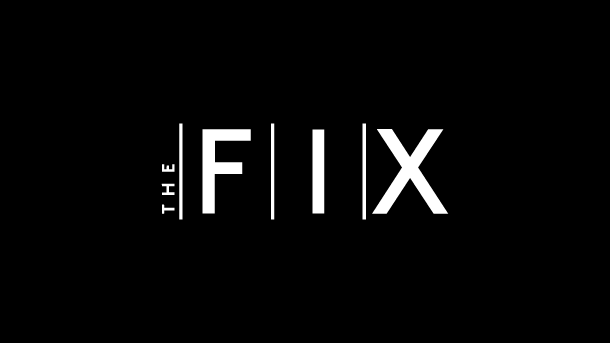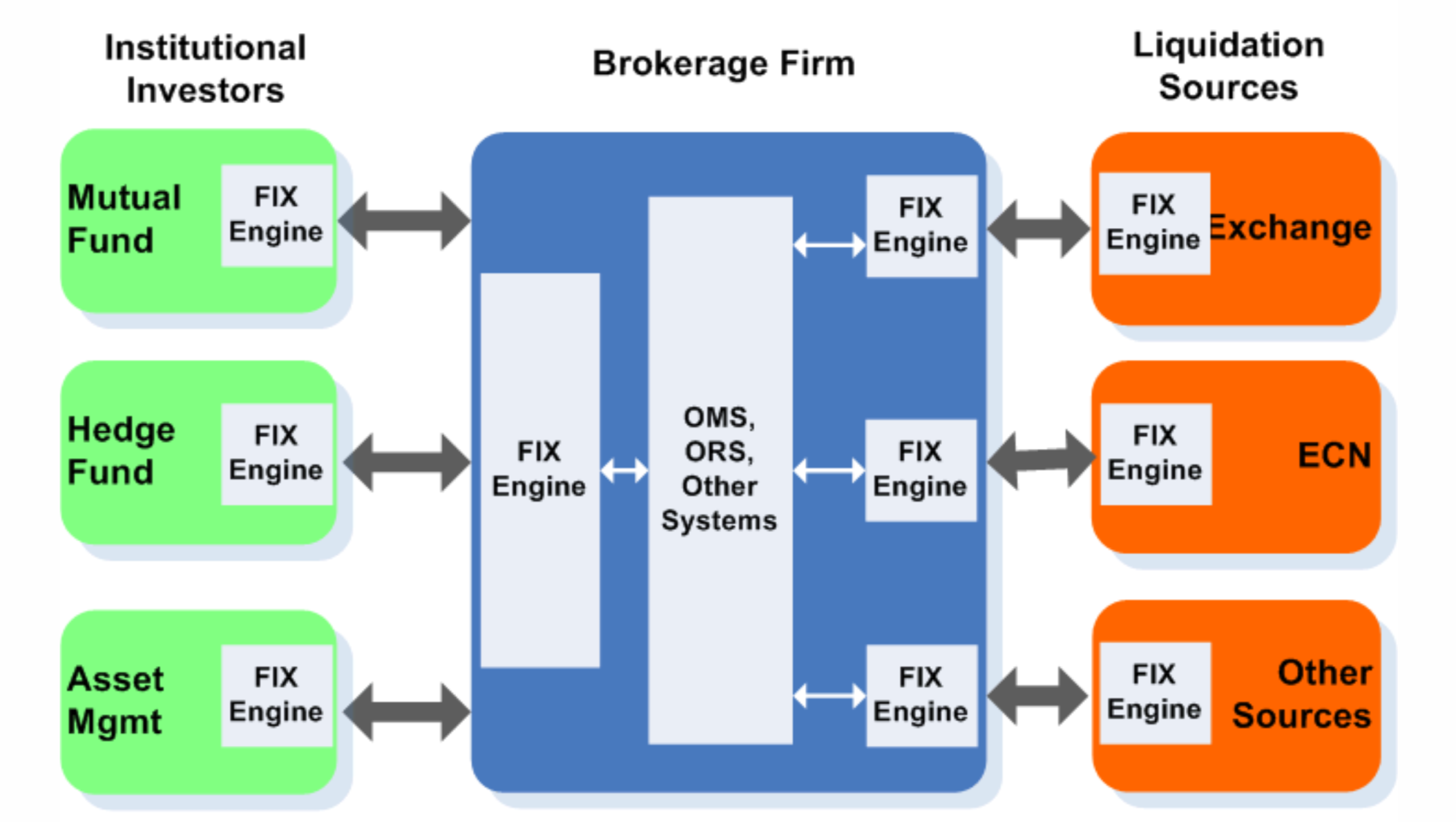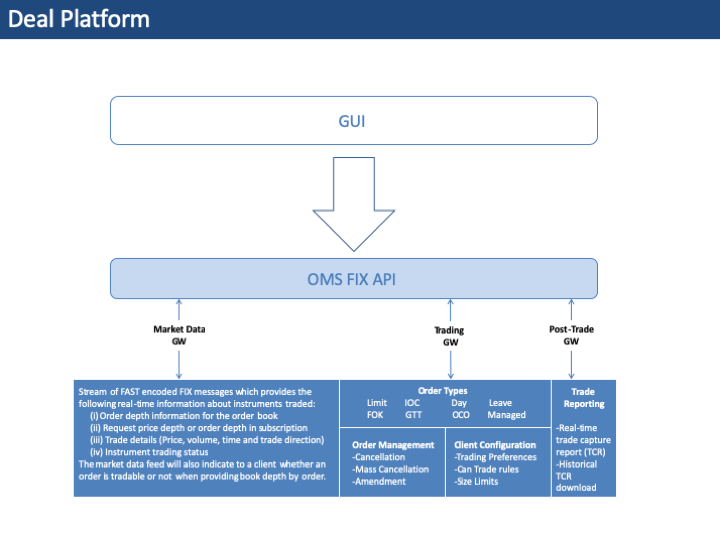FIX Messaging
by Kevin Lin
Zuhlke Engineering Singapore
What I will talk about
- This tech talk is for engineers with little or no prior knowledge on FIX.
- To provide a basic understanding of FIX messaging standard, structure, system architecture and the programming model.
Zuhlke Engineering Singapore
What is FIX?
Zuhlke Engineering Singapore


Zuhlke Engineering Singapore
Financial Information eXchange
A electronic communications protocol for international real-time exchange of securities transaction information.
Used by the FIX community which includes nearly 300 member firms including all major investment banks.
The de-facto messaging standard for front office messaging. It is used for pre-trade, trade, and post-trade communication.
Zuhlke Engineering Singapore
Characteristic of FIX
- Simple, plain text, field-based text messages
- Platform and Transport independent, compatible with almost every common network technology
- Public standard
- Owned & managed by FIX Protocol Ltd, a non-profit financial community organization
- Wide support and lots of software vendors availability
Zuhlke Engineering Singapore
> The FIX Protocol was originally authored in 1992 to enable electronic communication of equity trading data between Fidelity Investments and Salomon Brothers.
- - by Robert "Bob" Lamoureux and Chris Morstatt
Zuhlke Engineering Singapore
Fidelity realized that information from their broker-dealers could be routed to the wrong trader, or simply lost when the parties hung up their phones.
It wanted such communications to be replaced with machine-readable data
Zuhlke Engineering Singapore
Strict syntax, machine parsable while remain textual
Extensible, support all current and future trading activities
Concise, use less characters to conserve bandwidth
JSON? No good way to enforce syntax/schema Protobuf? Probobaly
Zuhlke Engineering Singapore
Buy 5000 IBM @ 110.75
Zuhlke Engineering Singapore
Buy 5000 IBM @ 110.75
[A fund manager] tells [A broker] I'm willing to Buy 5000 units of IBM shares at the price of 110.75 dollars right now
Zuhlke Engineering Singapore
Buy 5000 IBM @ 110.75
[A fund manager] tells [A broker] I'm willing to Buy 5000 units of IBM shares at the price of 110.75 dollars right now
- Replace each piece of information with a field/tag, identified by a decimal number
- And add additional fields/tags required by machine
Zuhlke Engineering Singapore
Buy 5000 IBM @ 110.75
8=FIX.4.2^9=251^35=D^49=AFUNDMGR^56=ABROKER^34=2^52=20030615-01:14:49^11=12345^21=1^55=IBM^54=1^60=2003061501:14:49^38=5000^40=2^44=110.75^10=127
| Header fields | Body fields | Trailer Fields | --- | --- | --- | | 8=BeginString (indicates FIX 4.2) | 11=ClOrderID (client order id) | 10=Checksum | | 9=BodyLength (251) | 21=HandleInst (automated exec) | | | 35=MsgType (new order) | 55=Symbol (IBM) | | | 49=SenderCompID (AFUNDMGR) | 54=Side (buy) | | | 56=TargetCompID (ABROKER) | 60=TransactTime (2003061501:14:4952) | | | 34=MsgSeqNum (2) | 38=OrderQty (5000) | | | 52=SendTime (20030615-01:14:49) | 40=OrdType (Limit) | | | | 44=Price (110.75) | |
Zuhlke Engineering Singapore
Buy 5000 IBM @ 110.75
##### 8=FIX.4.2^9=251^35=D^49=AFUNDMGR^56=ABROKER^34=2^52=20030615-01:14:49^11=12345^21=1^55=IBM^54=1^60=2003061501:14:49^38=5000^40=2^44=110.75^10=127
| Header fields | Body fields | Trailer Fields | --- | --- | --- | | 8=BeginString (indicates FIX 4.2) | 11=ClOrderID (client order id) | 10=Checksum | | 9=BodyLength (251) | 21=HandleInst (automated exec) | | | 35=MsgType (new order) | 55=Symbol (IBM) | | | 49=SenderCompID (AFUNDMGR) | 54=Side (buy) | | | 56=TargetCompID (ABROKER) | 60=TransactTime (2003061501:14:4952) | | | 34=MsgSeqNum (2) | 38=OrderQty (5000) | | | 52=SendTime (20030615-01:14:49) | 40=OrdType (Limit) | | | | 44=Price (110.75) | |
Zuhlke Engineering Singapore
FIX message structure
- Header fields
- message type, length, sequence number, sender/target, encoding, etc.
- Body fields
- session & application data
- Trailer fields
- Signature, checksum
Zuhlke Engineering Singapore
Message fields
- For each field
=the specification defines: - Tag – A unique number.
- Field Name – Field name with no spaces.
- Required - Mandatory/optional
- Description – Definition of data, data type, etc.
- `` is ASCII SOH character
Zuhlke Engineering Singapore
A brief history of FIX
- Introduced in 1992
- 1995 - first public spec (FIX 2.7) released
- 1996 - FIX 4.0
- Introduced with good US equity support (still in use in US)
- 2000 – FIX 4.2
- Better international support
- Futures, options, FX
- 2001 – FIX 4.3
- Fixed income
- 2003 – FIX 4.4
- Confirmations & trade reporting
- 2006 – FIX 5.0 & FIXT1.1
- Complex FX, improved session/transport level
Zuhlke Engineering Singapore
Who uses FIX?
- Institutional investors (the buy side)
- Broker/dealers (the sell side)
- Exchanges & Electronic Communication Networks (ECN)
- Financial industry utilities
- Software & services vendors
Zuhlke Engineering Singapore
What/where is it used?
- Financial Products Supported
- Equities
- Fixed Income
- FX
- Derivatives (Options, Futures, IR Swaps etc)
- Used worldwide
-text">-Zuhlke Engineering Singapore
What/where is it used?
- Financial Products Supported
- Equities
- Fixed Income
- FX
- Derivatives (Options, Futures, IR Swaps etc)
- Used worldwide
- Except mainland China :cn: :sin:"
Zuhlke Engineering Singapore
How is it used?
- Used by exchanges, ECN, & brokers/ dealers to distribute market data, quotes, etc.
- Money mangers use it to send orders and receive executions from brokers.
- Used by exchanges & ECNs to receive orders or quotes & report trades.
- Used to allocate & confirm trades.
Zuhlke Engineering Singapore
Variant of FIX
- tagvalue (classic FIX)
- FAST - FIX Adapted for Streaming
- Binary encoding for reduced bandwidth use and low latency
- FIXML - XML
Zuhlke Engineering Singapore
Typical FIX system architecture

Zuhlke Engineering Singapore
Typical FIX system connectivity

Zuhlke Engineering Singapore

Zuhlke Engineering Singapore
`8=FIXT.1.1^A9=908^A35=y^A49=FIXEDGE^A56=UILNDRGW1^A34=2239^A52=20170309-11:41:49.132^A560=0^A393=1^A320=23387919276913833^A322=23387919276913833_37^A1151=NDF.AFRICA^A893=Y
Zuhlke Engineering Singapore
FIX Versioning
FIX currently supports three versions of the application messages that serve as the basis for standardization:
- Version 5.0 Service Pack 2
- Version 4.4
- Version 4.2
**_FIX.5.0SP2_** is the most current version of FIX that supports multiple asset classes and a wide range of trading life cycle business processes.
The FIX session protocol was separated from the application with the introduction of FIX.5.0**_FIX.4.4_** is one of the most widely adopted versions oF FIX. FIX.4.4 covers multiple asset classes including fixed income instruments. As of 2010, it is considered compliant to use fields, messages, and components as of the latest extension pack of FIX with FIX.4.4.**_FIX.4.2_** is widely used for equities, FX, and listed derivatives trading.Zuhlke Engineering Singapore
FIX tag number space
- Public fields (tagNum < 5000)
- Reserved for standard specifications or extentions
- User defined fields (5000 <= tagNum < 9999)
- Publicly registered, fully allocated
- User Defined Fields
- User defined fields (10,000 <= tagNum <= 39999)
- For bilateral user between parties, do not need to be registered
Zuhlke Engineering Singapore
Session & application layers
- Session layer/protocol
- Make & terminate connections
- Deliver messages in sequence w/ data integrity
- Application layer
- Business level messages
- Session & application layers are coupled prior FIX 5.0.
Zuhlke Engineering Singapore
Session Level Messages
- Logon
- Heartbeat
- Test Request
- Resend Request
- Reject
- Sequence Reset
- Logout
Zuhlke Engineering Singapore
Application Messages
- Pre-trade messages
- Market Data
- Security Info etc
- Trade messages
- Single Orders / Basket/List Orders / Multi-leg orders
- Execution Reports
- Order Cancel/Replace
- Status etc
- Post-Trade messages
- Allocations
- Settlement Instructions
- Positions Management etc
Zuhlke Engineering Singapore
- FIX Dictionary
- FIX Parser
Zuhlke Engineering Singapore
QuickFIX Family
- Free and open source implementation of the FIX protocol
- Java - QuickFIX/J
- .NET - QuickFIX/N
- Go - Quickfix/Go
Zuhlke Engineering Singapore
Create and send FIX message in OO way
import quickfix.*;
void sendOrderCancelRequest() throws SessionNotFound
{
quickfix.fix41.OrderCancelRequest message = new quickfix.fix41.OrderCancelRequest(
new OrigClOrdID("123"),
new ClOrdID("321"),
new Symbol("LNUX"),
new Side(Side.BUY));
message.set(new Text("Cancel My Order!"));
Session.sendToTarget(message, "TW", "TARGET");
} Zuhlke Engineering Singapore
Key things to take note working on FIX systems
- FIX systems are generally high-throughput, low-latency systems, design ahead
- High availability, i.e. failover, auto-recovery are usually hard requirement
- To protective in coding to handle unexpected message scenarios
- Message logs are the source of truth when there is a problem
Zuhlke Engineering Singapore
Thank you! ❤️

Zuhlke Engineering Singapore
Zuhlke Engineering Singapore